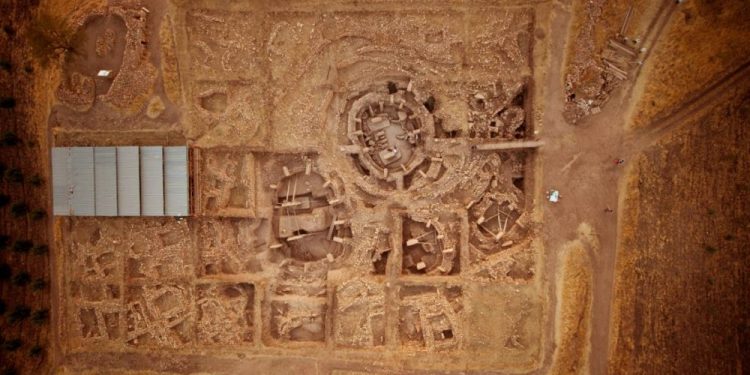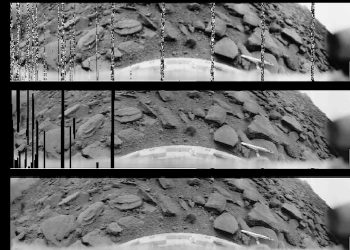Some 12,000 years ago, during the last Ice Age, a mysterious people in present-day Turkey built a never-before-seen temple. Using stones with a weight of more than 10 tons, this mysterious society would go on to erect an entire complex of unseen propositions and characteristics. However, there’s a bit of a pickle there; academics tell us that at that time, over 12,000 years ago, only minor hunter-gatherer societies existed.
But were hunter-gatherer societies capable of quarrying multi-ton stones and creating supermassive temples? According to our history books, not really. That’s why Göbekli Tepe changes it all; there is nothing in the world, in terms of its age and size, that can be compared to Göbekli Tepe.
It is an excellent example of a type of architectural ensemble which represents a vital stage in human history. Göbekli Tepe is home to the world’s first human-built monumental (megalithic) buildings.
Göbekli Tepe is more than just ancient. It dates back to a time when nothing comparable was built anywhere in the world. It’s so old that it even predates the Egyptian pyramids and Stonehenge. According to experts, Göbekli Tepe is at least 7,000 years older than the earliest Egyptian Pyramid, the Step Pyramid of Saqqara.
So, how could these still-undeveloped societies go on to erect a temple of a never-before-attempted size? Göbekli Tepe is a genuine ancient wonder, and we’ve not given its structures enough credit. Nothing like it exists anywhere else in the world; archeological surveys as of May 2020 reveals the site is home to more than 200 stone pillars. These massive t-shaped stones have an average weight of ten tons and measure six meters in height.
That alone makes Göbekli Tepe a mind-boggling ancient achievement. Although we’ve been excavating the site for more than two decades, we’ve found very little information about the society that erected the massive stone pillars.
We know that Göbekli Tepe was of great importance and built over a prolonged period of time. The stones used in its construction originated from quarries nearby. This involved moving the megaliths across distances of more than 500 meters. Twelve thousand years ago, this was surely no easy task. Although the t-shaped pillars have been estimated to weigh 10 tons, there are much heavier stones at the site.
Archaeologists have discovered some pillars with a weight of over 20 tons, and the largest example weighs 50 stones. This supermassive block of stone still sits in its quarry, no more than 500 meters away. How such massive stones were transported remains a mystery.
Aerial Images

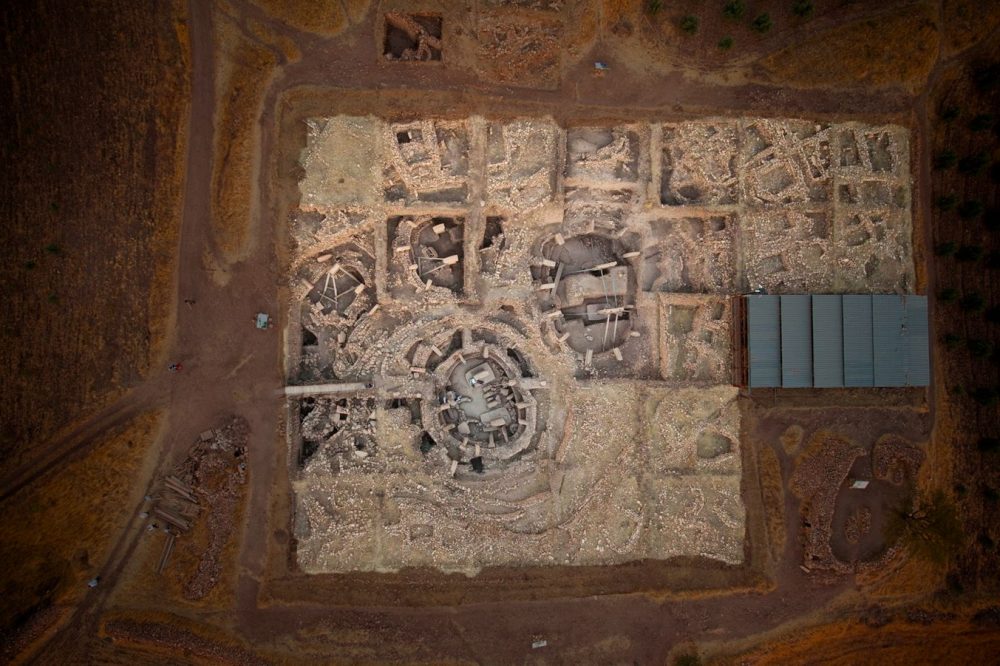
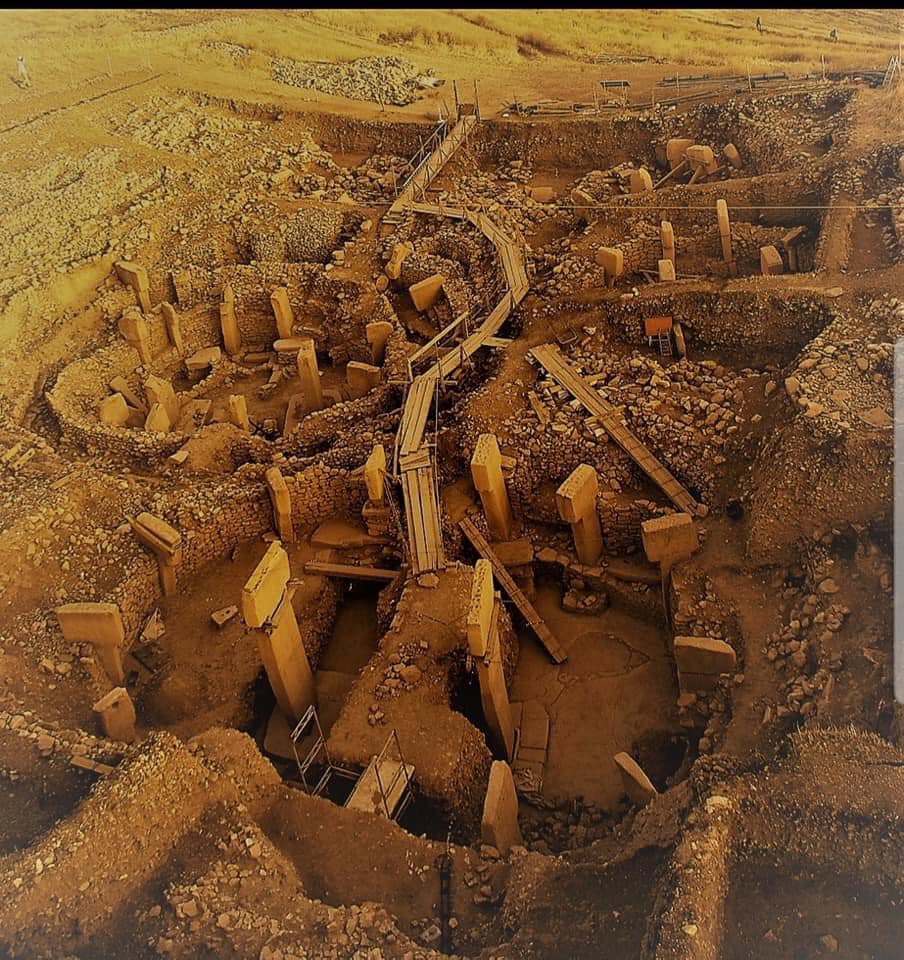
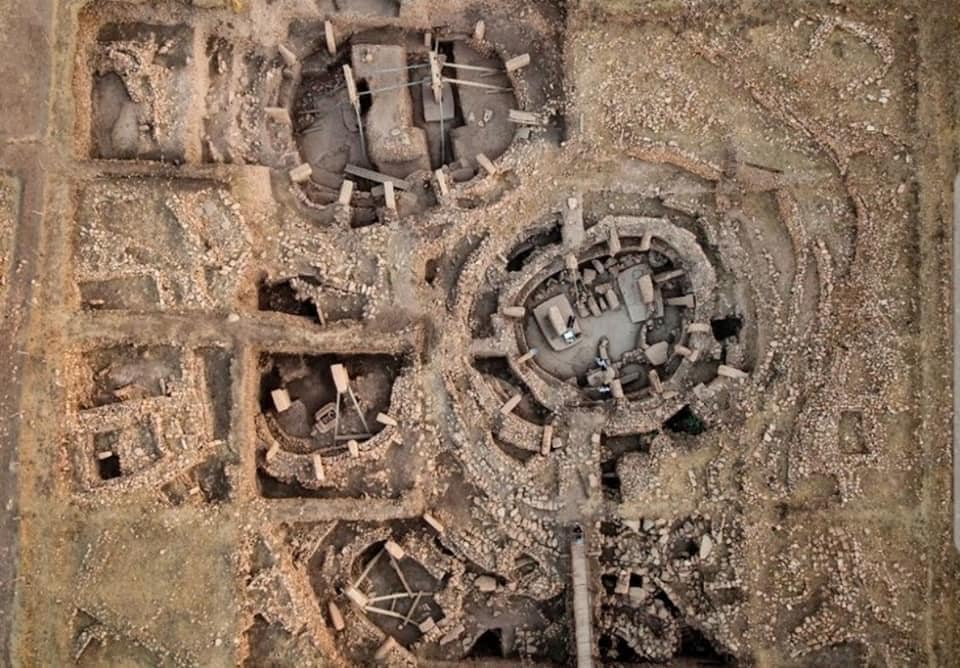
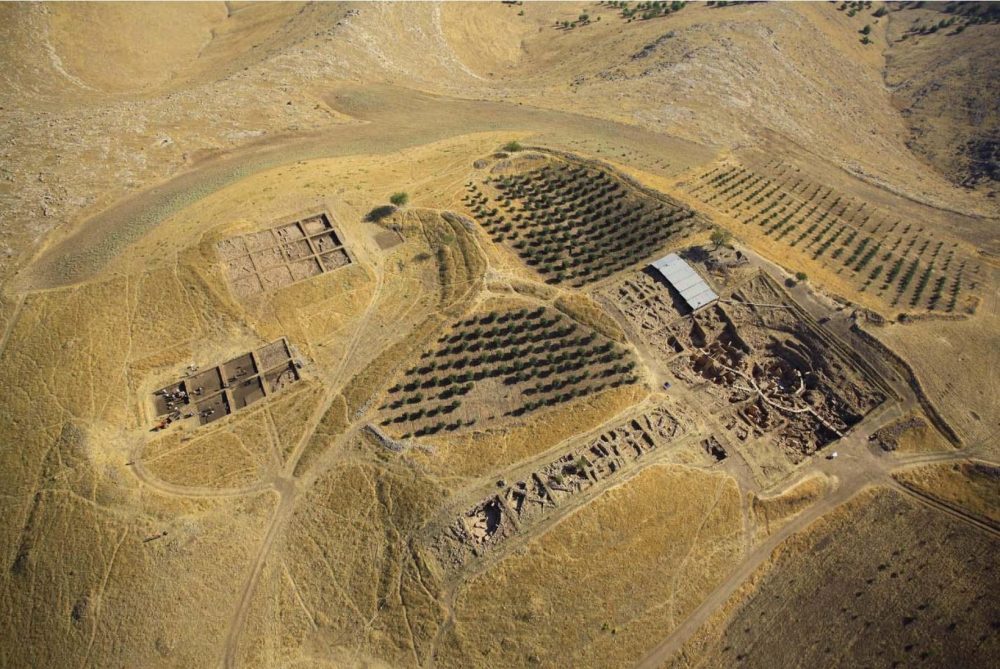
Göbekli Tepe Facts
The exact purpose of Göbekli Tepe remains a profound archeological mystery. Excavations since 1996 have attempted unraveling the mysteries behind the massive megalithic temple, but most of its precious history remains a profound enigma to us.
1) Although excavations have been underway since 1996, archeologists believe that no more than five percent of the entire temple complex has been excavated. (Gobekli Tepe was buried around 10,000 years ago). The site was first registered in an archeological survey of the area by the Universities of Istanbul and Chicago in 1963.
At the time, experts mistook the site and its barely visible stone slabs as grave markers that belonged to the Byzantine period. Little did they know that what lay beneath the surface was a treasure trove of history, one that could alter our understanding of early human societies and when these appeared in the historical timeline.
2) Göbekli Tepe has an imposing stratigraphy attesting to many centuries of activities, the earliest of which have been dated to the 10th millennium BC. The structures at the site predate metallurgy and pottery, the wheel’s invention, and even writing.
Having been built before the Neolithic Revolution, Göbekli Tepe implies that an advanced, hitherto unknown society existed in the region over 12,000 years ago, capable of erecting megalithic temples and complex construction projects.
3) Building such a vast site was no easy task and surely required a great workforce. Archeological estimates tell us that more than 1,000 people were needed to extract, move, and position the massive multi-ton pillars at the site. This, in turn, means that whoever built Göbekli Tepe was part of a well-developed society that could finance the project. Although 12,000 years ago, money as we know it was nonexistent, people still needed to be fed, dressed, and cared for.
This tells us that to build Göbekli Tepe, hunter-gatherers must have settled somewhere in the region where the workers were fed and slept. Although archaeologists have still not found traces of houses or communities at Göbekli Tepe, they did excavate over 100,000 animal bones. Analysis of the bones has revealed that many of the animals were butchered and cooked.
4) The animal bones mostly belonged to wild animals such as gazelles, which accounted for over 60% of the bones. Nonetheless, archaeologists did find other animal bones belonging to boars, sheep, and red deer, as well as different species of birds such as vultures, cranes, ducks, and geese. Since the animals show no signs of domestication, experts have concluded that the site was undoubtedly built by hunter-gatherers and not early farmers, as some have suggested. However, just because the animals were not domesticated does not necessarily mean the society was not a stationary one and that they didn’t settle somewhere near Göbekli Tepe, at least partially.
This tells us that Göbekli Tepe is far more extensive than what we’ve thought until now.
Whatever the case, Göbekli Tepe is the oldest of its kind and attests to a complex society that was more than capable of erecting megalithic temples.
Whether Göbekli Tepe was, in fact, a temple or had a different purpose remains a mystery. Although archeologists believe people pilgrimaged to the site across vast distances, there are some who believe the site may have served as an early astronomical observatory.
5) But no matter what purpose it may have served, Göbekli Tepe is a fascinating example of the level of development of ancient people. Recently, a study published in the Cambridge Archaeological Journal reveals that Gobekli Tepe’s builders were far more advanced than previously believed. The researchers studied three of the oldest stone enclosure of the site (around 12,000 years old) and discovered advanced hidden geometric patterns, specifically an equilateral triangle. This implies that its architects knew early forms of geometry.
Join the discussion and participate in awesome giveaways in our mobile Telegram group. Join Curiosmos on Telegram Today. t.me/Curiosmos



